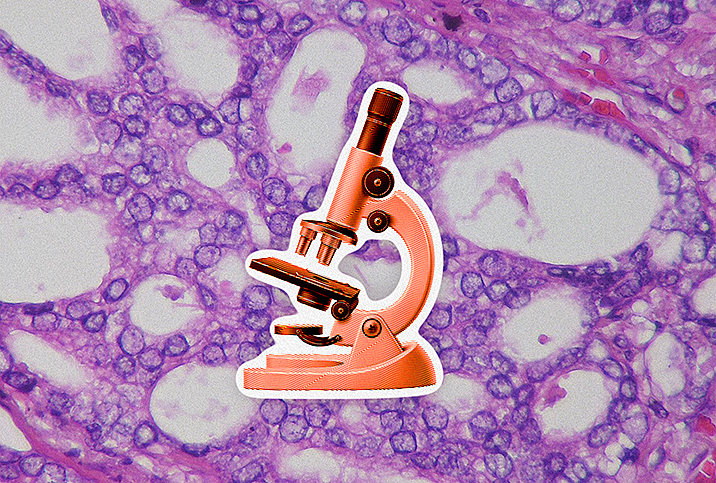What Doctors Don't Know About Rare Prostate Cancers

Prostatic adenocarcinoma is by far the most commonly diagnosed type of prostate cancer. The Cancer Treatment Centers of America reports that prostatic adenocarcinoma accounts for up to 99 percent of prostate cancer diagnoses.
But prostatic adenocarcinoma isn't the only type of prostate cancer.
Prostate cancer is a disease that occurs when malignant cells form in the tissue of the prostate, the walnut-sized gland located below the bladder and in front of the rectum that is responsible for producing the seminal fluid that nourishes and transports sperm. Prostate cancer is one of the most common cancers found in U.S. men, second only to skin cancer, according to the American Cancer Society.
Rare prostate cancers
Prostate cancers are classified based on the types of cells in which they originate. For example, prostatic adenocarcinoma develops in the gland cells that make prostate fluid. Less common and more aggressive forms of prostate cancer include neuroendocrine prostate cancer, prostatic small cell carcinoma, prostate sarcoma and transitional cell carcinoma of the prostate, to name a few.
Neuroendocrine prostate cancers originate within the neuroendocrine cells found in the prostate and sometimes occur at the same time as the much more common prostatic adenocarcinoma.
Small cell and large cell prostate cancer both originate in neuroendocrine cells within the prostate and are known to be aggressive, growing and spreading to other parts of the body more quickly than other types of the disease.
These types of prostate cancers are difficult to diagnose, too. Neuroendocrine cells do not produce prostate-specific antigens (PSA) and therefore can't be detected by a PSA test, a common diagnostic tool for prostate cancer, according to Prostate Cancer UK. Detecting small or large cell prostate cancer before it spreads is sometimes only possible with a biopsy. These cancers usually reach the advanced stage before they are detected and are most often treated with a combination of radiation therapy, chemotherapy and surgery.
Basal cell prostate cancer is another extremely rare version of the disease, one that medical experts don't know much about. Basal cells also don't produce PSA, meaning it's unlikely to detect cancer through a PSA test. In some cases, basal cell prostate cancer can grow enough that it causes the urethra to narrow, resulting in urination problems that may help lead to detection. Some studies suggest it might be more aggressive than common prostate cancer.
Transitional cell carcinoma rarely starts in the prostate itself. Also known as urothelial carcinoma, this cancer typically originates in the cells that line the urethra or the bladder and then spreads to the prostate. Surgery or radiation therapy is often used to treat transitional cell carcinoma that hasn't spread far beyond the prostate, whereas a combination of chemotherapy and radiation may be needed when the cancer has spread to distant organs.
Sometimes, prostate cancer develops in mesenchymal cells, which are found in the smooth muscle cells of the prostate. This is called prostate sarcoma. Sarcomas are cancers that can occur anywhere in the body but rarely compared to other cancers.
All of the above are just a few examples of rare prostate cancers. They come with a lot of unknowns, including why they occur, how they develop and how best to diagnose them, though research is ongoing.
Prostate cancer outlook
Although prostate cancer is a common and sometimes fatal disease among men in the United States, there are reasons to stay positive in the face of a diagnosis.
The five-year relative survival rate for men whose prostate cancer is detected before it has spread outside the prostate is nearly 100 percent, according to the American Cancer Society. For men who are diagnosed after the cancer has spread to distant parts of the body, the five-year relative survival rate is 30 percent. The 10-year relative survival rate for all stages of prostate cancer combined is 98 percent.
These numbers will vary for each individual and each rare form of prostate cancer. Regardless, you need to be proactive about your prostate health. Statistics show that in general, keeping up with routine preventive health screenings and maintaining an overall healthy lifestyle greatly improve your health outcomes in the long term, whether that's due to early detection and successful treatment or lower risk overall.


















